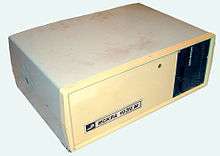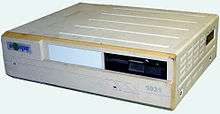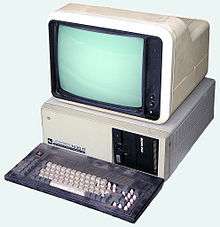Iskra-1030
The Iskra 1030 (Russian: Искра 1030) was an Intel 8086 compatible personal computer produced in the USSR. It was designed by Elektronmash (Russian: ЛНПО «Электронмаш») in Leningrad. The main manufacturers were the Iskra factory (Russian: Искра) in Smolensk and the Shchyotmash factory (Russian: Счётмаш) in Kursk. The model line consisted of Iskra 1030.11 (basic), Iskra 1030М (modified), Iskra 1031, and Iskra 3104.



Specification
The Iskra 1030M produced from 1989 comprised:
Software
The computer was shipped with ADOS, a Russian version of MS-DOS/PC DOS 2.x and 3.x, a BASIC interpreter, the special language and interpreter for accounting calculations YAMB (Russian: ЯМБ, Язык машин бухгалтерских), the text editor R1. The operating system used the main code page, hardwired into the display ROM; it was compatible neither with CP 866 nor CP 855, although partially with ISO/IEC 8859-5.
See also
External links
- Sergei Frolov's Soviet Digital Electronics Museum
- (in Russian) Iskra 1030 (PC Museum)